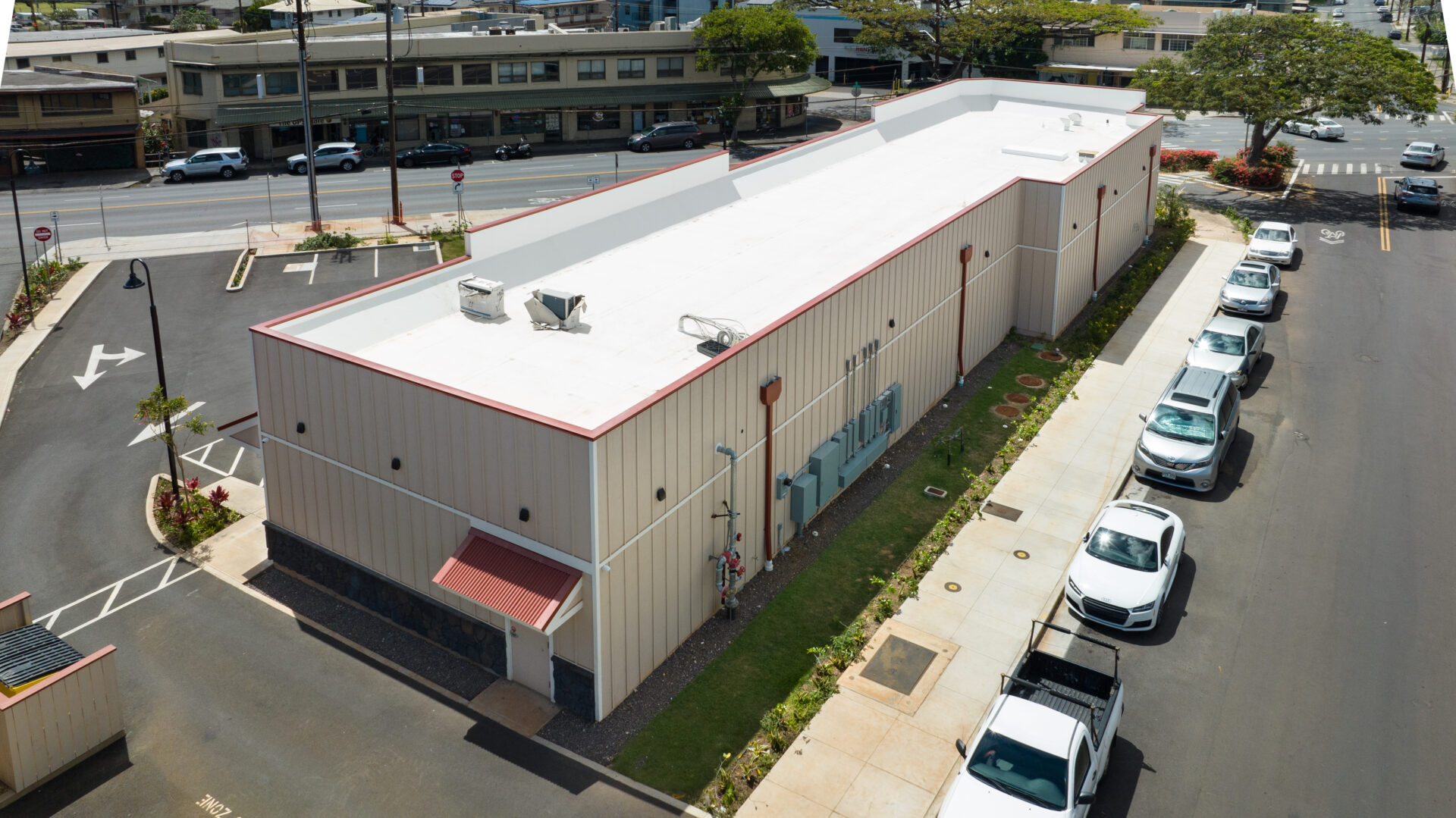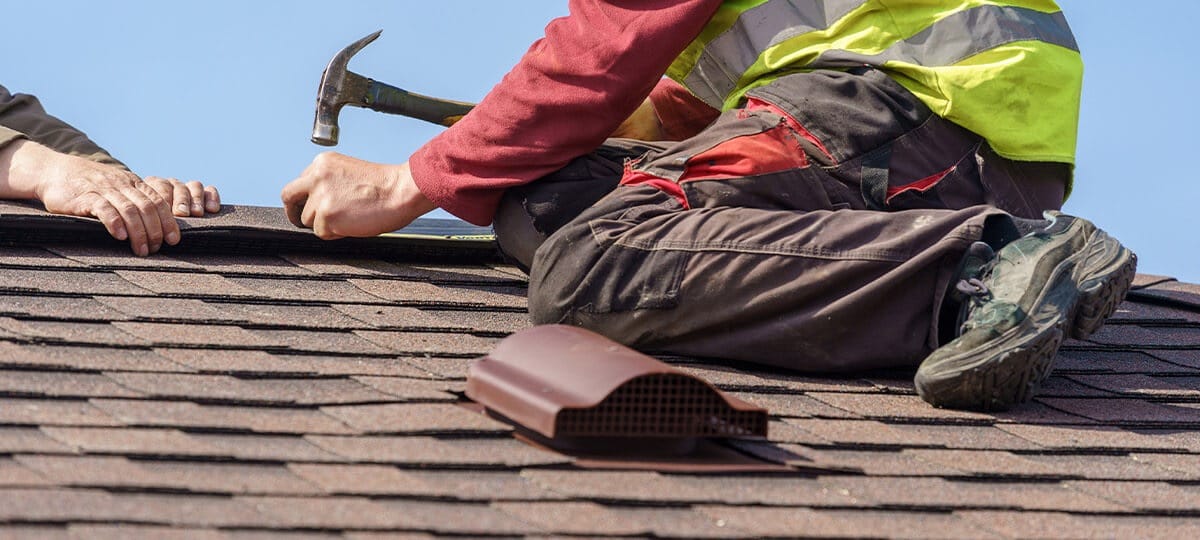Uncover Common Roof Covering Problems and Just How to Address Them Successfully
When it comes to your roofing, spotting issues early can save you time and money. What specific steps should you take to ensure your roofing system continues to be in top condition?
Determining Roof Leakages and Their Reasons
)
Following, analyze your roofing system from the outside. Seek missing or cracked tiles, rusted blinking, or damaged seamless gutters. Pay interest to areas around chimneys, vents, and skylights, as these prevail leak resources. If you identify any one of these issues, it's essential to address them immediately.
Throughout hefty rain, observe your roof covering for any merging water or drips. This can disclose leaks that may not be noticeable throughout completely dry conditions. By remaining watchful and frequently examining your roof covering, you can catch leaks early and shield your home from more damage.
Taking care of Missing Out On or Damaged Shingles
When you see missing or damaged roof shingles, it's important to act quickly to stop more issues. You'll wish to identify the extent of the damage, fix any kind of missing tiles, and take into consideration preventive maintenance pointers to keep your roofing system in leading form. Taking these actions can save you money and time in the future.
Recognizing Tile Damage
Although roof shingles are made to hold up against the elements, they can still suffer damages with time, bring about potential leakages and costly repair services. To determine roof shingles damages, start by inspecting your roofing for missing, split, or curled roof shingles. Try to find signs of discoloration or granule loss, which can suggest wear and tear. Take notice of any type of locations where tiles are raising or buckling, as these can develop susceptabilities. It's additionally a good idea to look for water spots or mold and mildew on your ceilings and wall surfaces, as these may signal leaks originating from damaged shingles. Regularly checking your roof, especially after extreme weather, can assist you catch concerns early and preserve the stability of your home.
Repairing Missing Roof Shingles
After spotting roof shingles damages, the next action is attending to any missing or damaged roof shingles promptly to stop more issues. Begin by examining the afflicted location and establishing just how numerous roof shingles need substitute. If you can, climb onto your roof safely, putting on appropriate gear. Get rid of any kind of broken shingles carefully utilizing a crowbar. When you have actually removed the location, slide in the brand-new roof shingles, guaranteeing they line up with the existing ones. Protect them with roof nails and use roof adhesive for added stability. Don't neglect to secure the sides to stop water seepage. If you're awkward with the repair, it's wise to call a professional. Taking action promptly will help maintain your roof's honesty and expand its life expectancy.
Preventive Upkeep Tips
Exactly how can you maintain your roof covering in top shape and avoid shingles from going missing out on or obtaining harmed? Routine examinations are key. Examine your roofing system a minimum of two times a year and after serious weather condition. Try to find signs of wear, such as curling, cracking, or loosened tiles.
Maintain gutters tidy and without particles to ensure proper water flow and stop shingle damages. Trim looming branches to decrease the risk of them scratching against your roofing throughout storms.
Think about applying a safety sealer to expand your shingles' life expectancy. Lastly, if you observe any kind of issues, address them immediately to avoid pricey repairs later. Taking these preventative measures can conserve you time and cash while assuring your roof remains long lasting and reliable.
Understanding Roofing System Ventilation Issues
Proper roof covering ventilation is important for maintaining the long life and performance of your roofing system, as it helps regulate temperature and wetness degrees in your attic. Without sufficient ventilation, you may deal with problems like extreme warm accumulation, bring about early roof shingles degeneration, or boosted humidity that can trigger mold growth and timber rot.
To analyze your roof covering air flow, look for indications of overheating, such as warped roof shingles or a warm attic room. Try to find blocked vents, which can limit air flow and trap heat. You need to ensure your consumption and exhaust vents are balanced, allowing for proper air exchange.
If you suspect air flow issues, think about installing added vents or upgrading existing ones. Ridge vents, soffit vents, and gable vents can all enhance airflow. Addressing these concerns immediately can safeguard your roofing system and conserve you from expensive repair work down the line. Keep positive in preserving your roof's air flow to safeguard your home.
Resolving Roof Moss and Algae Development
While you might value the natural appearance of moss and algae on your roof, these microorganisms can cause significant issues if left unchecked. They trap wetness, which can lead to shingle degeneration and leakages. To tackle this concern, start by eliminating any noticeable growth. Use a soft-bristle brush to carefully scrub away the moss and algae, bewaring not to harm your roof shingles.
Next, think about applying a specialized roofing system cleaner or a mix of water and bleach to kill continuing to be spores. Regular assessments and maintenance will certainly help avoid moss and algae from returning, ensuring your roof covering remains in good form for years to come.
Fixing Tornado Damages and Wind Concerns
After a storm, it's vital to assess your roofing for damages triggered by high winds and heavy rain. Beginning by looking for missing or damaged roof shingles, as these prevail casualties. If you notice any, it is very important to replace them promptly to stop leakages. Next, examine the flashing around smokeshafts and vents; harmed flashing can result in water penetration.
Try to find any type of sagging locations, which might show water accumulation or structural concerns. If you discover any kind of debris, like branches or leaves, eliminate them meticulously to stay clear of more damages. If your rain gutters are blocked, clear them to assure appropriate drainage.

For small repair services, you could handle it yourself, but do not hesitate to call a professional for substantial damages. Keep in that site mind, acting swiftly can save you from bigger problems down the line, so take that assessment seriously and attend to any kind of issues asap.
Recognizing Indications of Architectural Damages
Just how can you tell if your roof covering is suffering from structural damage? Begin by seeking visible sagging or dips in your roofline. These indications suggest that the underlying framework might be compromised. Next, check for fractures or voids in the wall surfaces or ceiling, as these can signal moving or clearing up as a result of roofing system problems. Pay attention to leaks or water spots, particularly in areas where the roof covering site web satisfies walls. If you observe missing out on or broken tiles, it's vital to resolve them swiftly, as they can subject your roofing to more damages. Examine your attic for any indicators of daytime glancing via, which can indicate your roofing system's integrity is at threat. Listen for uncommon creaking or standing out audios, as they might indicate architectural stress. If you notice any one of these indications, it's time to seek advice from a roofing professional for a complete evaluation.
Routine Upkeep Tips for Durability

Regular Inspections Importance
Given that a roof covering is your home's very first line of protection against the elements, regular assessments are important for keeping its integrity. You need to inspect your roof at least two times a year, ideally in springtime and autumn, to capture potential problems early. Maintaining up with these evaluations can protect against pricey repairs down the line and extend your roof covering's lifespan, guaranteeing your home stays secure and audio for years to come.
Proper Gutter Maintenance
Normal roof covering assessments normally result in the relevance of proper rain gutter upkeep. Clean your seamless gutters at the very least twice a year to stop blockages from leaves, dust, and particles. If you live in a tree-heavy area, think about examining them much more commonly. Make use of a sturdy ladder and put learn the facts here now on gloves while eliminating the accumulation. Check your gutters for leaks or rust; they can cause water damage to your roof and home. Ensure downspouts straight water far from your structure to prevent flooding. Setting up rain gutter guards can minimize particles buildup and lower upkeep time. Check for proper slope; gutters need to incline toward the downspouts to assure ideal water drainage. By complying with these pointers, you'll extend your seamless gutters' life-span and secure your roofing.
Regularly Asked Concerns
How Can I Select the Right Roof Material for My Home?
To pick the best roofing product for your home, consider environment, longevity, and aesthetics. Research study options like asphalt tiles, metal, or floor tile. Consider upkeep needs and spending plan to find what matches you best.
What Are the Indications I Need a Roof Covering Replacement Rather of Repair?
If you observe prevalent leakages, drooping, or missing roof shingles, you could need a roofing replacement. Likewise, if your roof covering's nearing its lifespan or has considerable damage, it's time to contemplate a complete substitute rather than just repair work.
Exactly how Typically Should I Set Up Expert Roofing Assessments?
You need to schedule professional roofing examinations at least yearly, ideally in springtime or fall. This helps catch potential problems early, ensuring your roof covering remains in good problem and prolonging its lifespan.
Can I Set Up a New Roofing Over My Old One?
You can mount a brand-new roof covering over your old one, yet it's vital to examine neighborhood structure codes and assure the existing roof covering's problem is audio. This strategy can conserve money and time, however take into consideration possible issues.
What Is the Typical Life Expectancy of Various Roof Covering Materials?
The average lifespan differs by material: asphalt roof shingles last 15-30 years, metal roofing systems can last 40-70 years, while tile or slate roofs might exceed 50 years. Pick intelligently based upon your climate and budget plan.
Final thought
By remaining alert and addressing typical roofing troubles promptly, you can secure your home and extend your roofing's lifespan. With a little regular maintenance, you'll not only guard your investment however additionally delight in peace of mind understanding your roofing system is in top shape.